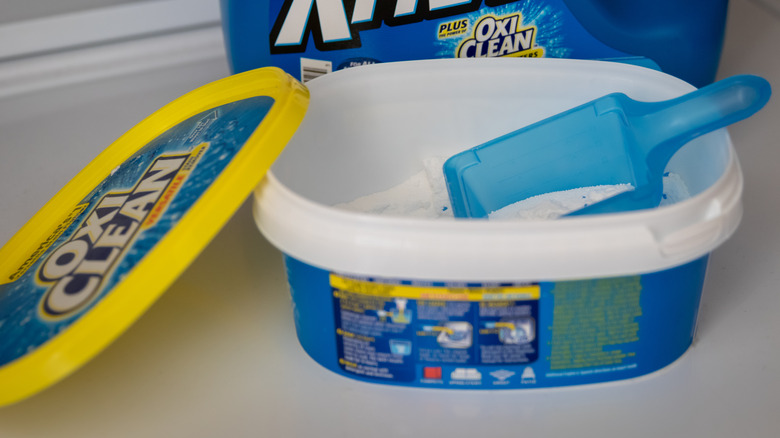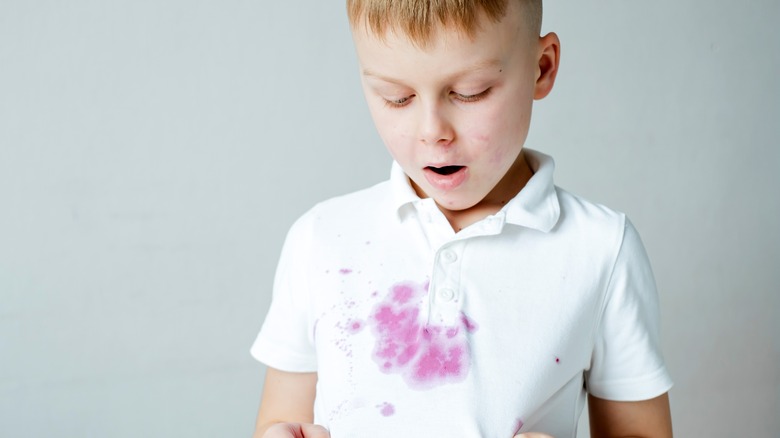Does OxiClean Actually Work?
Your go-to shirt is looking dull even when it's freshly laundered. Is it headed for the rag pile or can you brighten it up? They are your favorite tan pants, but the greasy pizza you just dropped on them (cheese-side down, of course) left a stain you fear isn't coming out. Your daughter's dance jacket is donned after a half-dozen sweaty classes each week. Will the smell ever go away?
You have heard that OxiClean can tackle stains, odors, and dinginess, but does it actually work? It seems a little too good to be true, particularly when you have tried other products. (You may even have a shelf full of them sitting on, around, or above your washing machine.) Experts break down the chemistry behind the powdered laundry booster to determine if the products, about 30 in all that range from the original powder versions to spot stain sprays, achieve the magical results they claim. Your Best Digs plunged in to the murky waters of stain removal with a lengthy study and product testing. They worked on four common stain producers: wine, coffee, chocolate, and ink. OxiClean was put to the test against tough competitors.
What makes OxiClean work?
So just what is in OxiClean that gives it power over stains, odor, and general griminess? Love to Know reminds us that the actual complete chemical makeup of the product is kept under wraps. Digging around on the web offers a few clues, however, since the secret formula is not publicly available. According to The Art of Doing Stuff, sodium percarbonate is the ingredient that enables OxiClean to lift the stains and brighten clothes like a boss. It has the oxidizing properties of hydrogen peroxide, which react with the organic compounds that exist in the stains.
We do know some of what is found inside the tub of OxiClean. With its main ingredient of sodium percarbonate, the laundry booster does not pose any environmental concerns, so says The Chemistry Store. They add that it is a color-safe product (so go ahead and try it out on your dayglo pink top) and that it works in many different water temperatures. The sodium percarbonate in OxiClean needs just two hours to work, but it will remain stable for up to six hours before dissipating.
OxiClean battles big stain producers
OxiClean tackles the kinds of stains we all dread. The Spruce narrowed their investigation to OxiClean's Revive product, which claims to remove stains and brighten clothing, in turn pushing aside your scary bottle of chlorine bleach that has ruined more than its share of clothes. The Spruce tested stain-causing substances that are universal, like grass and mud, and included ones like dreadful yellow mustard and greasy butter. Since OxiClean can be used both as a pre-soak and in the washing machine with your regular laundry, The Spruce evaluated both methods.
The results showed a clear connection between stain removal and OxiClean when the presoaking method was used. They determined that all the stains were less noticeable just by laundering in warm water, laundry detergent, and OxiClean. When they presoaked, however, all traces of the stains except for two disappeared; the grass and mud stains appeared to need additional attention, but the stains were very faint.
Success like that makes one want to see what else OxiClean can tackle. Money Talks News praised its work on tile grout while Clean My Space points to the disinfecting and cleaning properties that make garbage bins more tolerable. In the end, however, the good work that OxiClean does on our dance jackets, tan pants, and favorite going-out-for-pizza shirts is enough to keep it prominently on that shelf above the washing machine.


